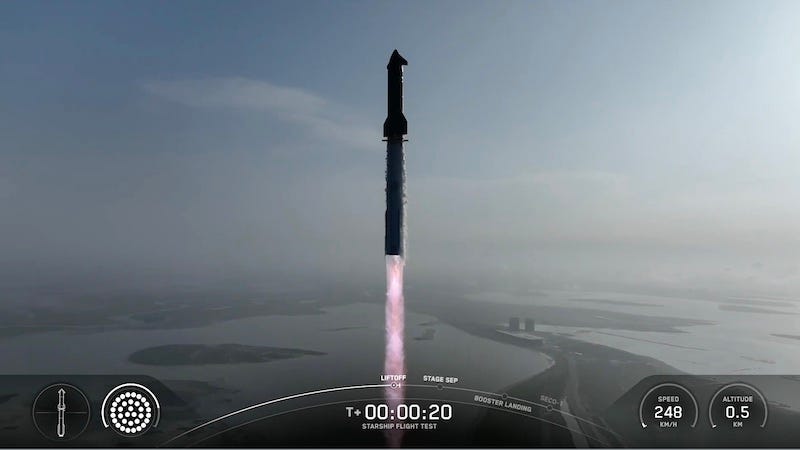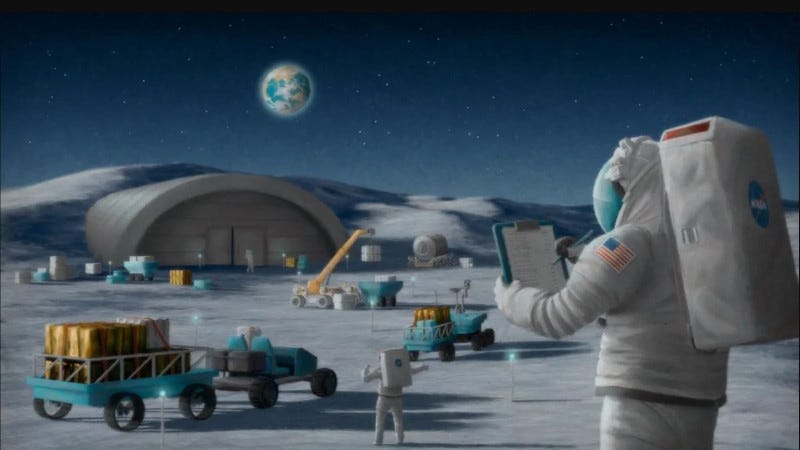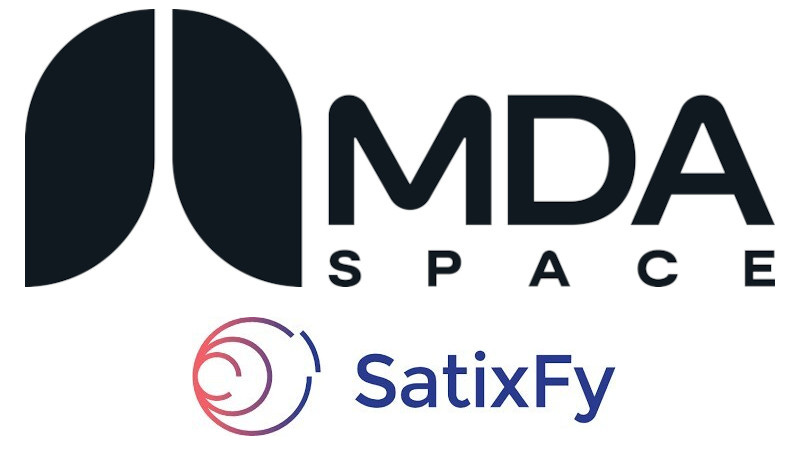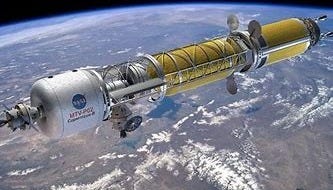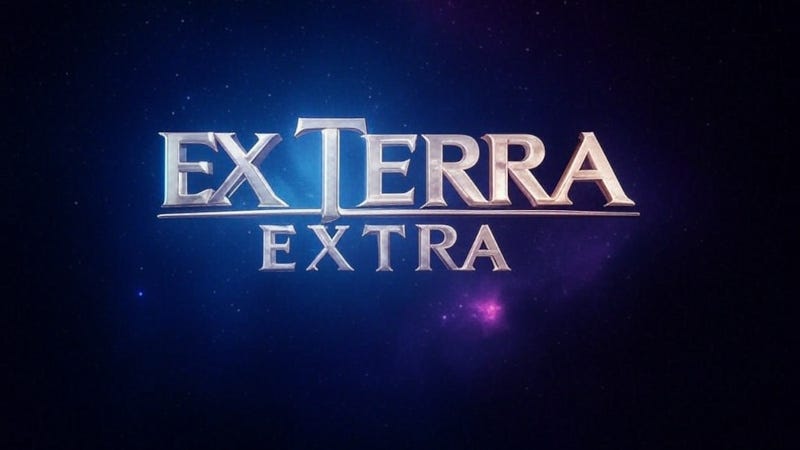SpaceX has a mantra: Fly, Learn, Repeat. And there will be a lot for SpaceX to learn from the ninth test flight of Starship, which ended with the loss of both the booster and 'Ship'.
Starship’s ninth flight test lifted off at 6:36 p.m. CT on Tuesday from Starbase, Texas. The Super Heavy booster supporting the mission made the first ever reflight in the Starship program, having previously launched on Starship’s seventh flight test in January 2025. The booster performed nominally until it reached the splashdown coordinates in the Gulf of America, and the landing burn was initiated. Dan Huot is part of the SpaceX Communications team.
Huot SOT "Ignited for our landing burn. It may have ended with that landing burn. It does look like we lost telemetry from the booster once we starten in to that landing burn. We just heard confirmation that the booster did demise. So the booster's flight ending before it was able to get through landing burn, but again we were not bringing that back, we expected it to make a hard splashdown in the gulf. We were getting data back that entire time through that high angle-of-attack flight, so that was something that was really vital for us to get from this re-use. First re-flight of booster in the books."
Ship continued on and reached an orbital altitude, but when the deployment of starlink analogs was attempted, but payload bay doors failed to open properly, and then attitude control of Ship was lost.
Huot SOT "As you can see from some of the views and some of the telemetry we are in a little bit of a spin. We did spring a leak in some of the fuel tank systems inside of Starship which a lot of those are used for attitude control. So at this point we've essentially lost our attitude control of Starship. We are still on a path toward reentry, We are suborbital so no matter what, we are going to reenter. However, this lowers the chances this will be a controlled reentry."
Contact with Starship was lost approximately 46 minutes into the flight, with all debris expected to fall within the planned hazard area in the Indian Ocean. Elon Musk said on X that he expects the cadence of launches of Starship to increase as the flight test program proceeds, but it will be at least in part up to the FAA when the next next launch will occur.
-0-
NASA has awarded a contract to Sierra Space to study the use of the company’s expandable space station technology on the moon. The purpose of this contract will be to ultimately develop innovative solutions for lunar surface logistics and mobility supporting NASA’s moon to Mars Architecture.
Under the NextSTEP-2 Appendix R for Lunar Logistics and Mobility Studies award, the research will include everything from the potential use of Sierra Space’s inflatable LIFE habitat technology for tunnels around a moon base to tracking and storage of goods on the moon, as well as integration of the entire framework for habitation on the lunar surface.
The company has been deeply involved in NASA's lunar habitation efforts, conducting analyses and design work on everything from landing systems to habitats and pressurized lunar rovers.
-0-
Dawn Aerospace has opened the order book for its Aurora spaceplane, with first deliveries expected in 2027. This marks the first time a space-capable vehicle – designed to fly beyond the Kármán line - has been offered for direct sale to customers.
Aurora is set to become the fastest and highest-flying aircraft ever to take off from a conventional runway, blending the extreme performance of rocket propulsion with the reusability and operational simplicity of traditional aviation. This concept enables high-frequency, low-cost access to both high-altitudes and space.
Aurora introduces a business model akin to commercial airlines, where operators can purchase aircraft and deliver services independently of the manufacturer. Dawn’s suborbital spaceplane is engineered for high-frequency operations from traditional airports and spaceports worldwide.
-0-
Coming up, MDA Space Acquires Satixfy, and the future of nuclear power in space. But right now, why not take a minute to become a paid subscriber to The Journal of Space Commerce Whether you’re a space professional or enthusiast, paid subscribers have first access to premium articles and podcasts focused on the new space economy. Just visit www.exterrajsc.com on Substack, and help keep The Journal of Space Commerce independent as we chronicle, cajole and, when necessary, critique the commercial space industry.
-0-
At a special meeting of shareholders last week, holders of the majority of outstanding ordinary shares of SatixFy voted to approve the Agreement and Plan of Merger with MDA Space, as amended and announced on May 20, 2025, pursuant to which MDA Space agreed to acquire SatixFy in an all-cash transaction. That transaction is expected to close in the third quarter of this year.
Over 99% of the Company’s outstanding ordinary shares that were voted at the meeting in person or by proxy were voted in favor of the adoption of the merger agreement and the merger.
Under the amended agreement, MDA Space will pay $3.00 without interest per ordinary share, which implies an aggregate equity value for the Company of approximately $280 million.
-0-
The first of a series of premium articles published this week by Ex Terra Media focuses on the potential for nuclear power in space, both as a method of propulsion and an ongoing energy source for long-term human habitation of the Moon and Mars.
The chemical propulsion systems and solar collectors that power so much of space travel today will not be adequate for long-duration missions to distant destinations. There is a lot of research being done in the area of ion thrusters and solar sails, but maybe the most elegant solution is a technology that has been around for nearly a century: nuclear power. It's an answer that could potentially have multiple applications for space exploration.
The article delves into details about Radioisotope Thermoelectric Generators (RTGs), which are currently in use in space, to Nuclear Thermal Rockets and the potential for nuclear fusion in space.
Projects like NASA's Kilopower initiative offer a promising starting point for advancing compact, lightweight nuclear reactors tailored for extraterrestrial environments. By demonstrating their capabilities through ground tests and eventual space missions, these efforts can pave the way for broader adoption of nuclear power in future expeditions. Read the full article right now by becoming a paid subscriber to The Journal of Space Commerce on Substack.
-0-
And this week on The Ex Terra Extra podcast, Mike Turner and I discuss the Satellite Industry Association's State of the Satellite Industry Report that it released recently, as well as the possible direction of NASA under the leadership of Jared Isaacman, should be he confirmed as the next administrator of the agency.
According to SIA, during 2024, the industry continued to grow at an unprecedented rate as a record number of 259 launches deployed an historic 2,172 tons and 2,695 satellites into Earth orbit. At the end of 2024, a total of 11,539 satellites were operating in Earth orbit compared with just 3,371 in 2020. And that's just the tip of the iceberg.
Meanwhile, what will be the role of NASA moving forward, and how might the dynamic between NASA and private industry change? During our conversation on Ex Terra Extra, Mike Turner questioned how NASA's budget is being deployed.
(Turner SOT) "Look, I love NASA. I want them to throw absolutely everything in the solar system and beyond because nobody does it better. But are we really spending the money the way we should? Can't NASA just say, maybe they say, here's the study we want done. People bid on the contract. And that's it. Let everybody else do what needs to be done and they stick with basic research. But I say basic research. What business is NASA in? Well, of course, it's a research and development organization. It's not a business, but what is it they do? And you can say, well, NASA does this, NASA does that.
"Okay, fine. But do they have to do everything? The SLS system is a NASA system. The Starship and Heavy Booster, that isn't. Boy, they all sure jumped on it when Elon's making this thing and they're going, oh, well, yeah, we can give you some contracts and we can do some things. Well, why didn't we do that with the SLS?
Well, it was politics. This is why the profit motive always does better than politics because politics, they don't care what they're spending. And in this day and age... You cannot, we don't have the luxury anymore to just throw dollars at things. And we have to be efficient."
You can listen to the full episode of the Ex Terra Extra podcast right now by becoming a paid subscriber to The Journal of Space Commerce on Substack.
-0-
And those are some of the top stories we covered for you on The Journal of Space Commerce this week. You can get daily updates on space commerce by subscribing to The Journal of Space Commerce on Substack at www.exterrajsc.com. And please consider becoming a paid subscriber. Whether you’re a space professional or enthusiast, paid subscribers have first access to premium articles and podcasts focused on the new space economy. Just visit www.exterrajsc.com and help keep The Journal of Space Commerce independent as we chronicle, cajole and, when necessary, critique the commercial space industry.
You Might have Missed:
UNESCO Cultural Heritage Payload Going to the Moon
Satellite Navigation Tech Contract Awarded to Redwire
Rover Added to Blue Ghost Mission to the Far Side of the Moon
Rocket Lab to Enter Payload Business with Acquisition of Geost
Multi-Launch Agreement for Helios Transport Services Signed
Theme Stock Music provided by CoolTones, from Pond5




